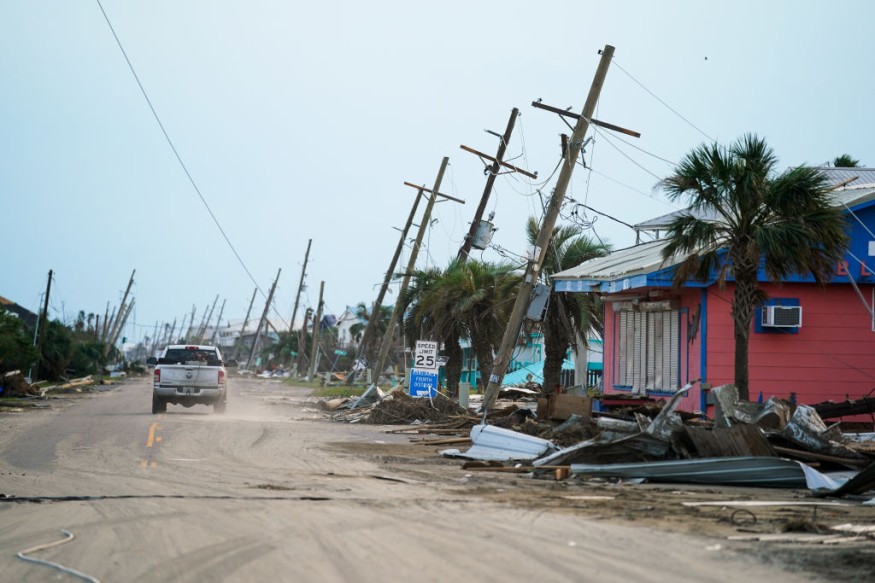The World Meteorological Organization (WMO) Hurricane Committee concluded Wednesday that Ida would join the ranks of defunct storm names after the Category 4 hurricane claimed dozens of lives and caused significant havoc across the country, even after falling into a tropical downpour.

WMO's Decision
The Centers for Disease Control and Prevention reported 91 deaths in late August 2021 due to Hurricane Ida's destructive route that sliced hundreds of miles from Louisiana to New Jersey.
According to NOAA's National Centers for Environmental Information (NCEI) and the National Hurricane Center, the hurricane was the fifth-costliest storm, costing $76.5 billion.
In late August, Dr. Joel N. Myers, founder and CEO of AccuWeather, predicted that the hurricane's overall damage and economic cost would be between $70 billion and $80 billion.
He updated his estimate to $95 billion after the storm inflicted devastating devastation in the Northeast.
Katrina

Hurricane Katrina, which hit New Orleans 16 years ago today, is still the most expensive hurricane, costing $180 billion when adjusted for inflation in 2022.
Hurricane Harvey ($143.8 billion in 2017), Hurricane Maria ($103.5 billion in 2017), and Hurricane Sandy ($80 billion in 2012) are the subsequent most expensive storms.
Storm Sally, which made $7.9 billion in damages and ranks 32nd on the list, was the most costly hurricane in the Atlantic Basin that hasn't had its name retired.
Retiring Storm Names
Ida is the 94th storm name to be retired and the 12th "I" name since 1954, solidifying the letter's position as the most-retired letter.
According to statistics provided by Brian McNoldy, a senior research associate at the University of Miami's Rosenstiel School of Marine and Atmospheric Science, only "C" and "F"-named storms come close to matching the number of retired I-named storms, which are tied at nine.
The soon-to-be-famous name initially appeared on the list in 2009, when it replaced Isabel, and, if utilized, the name Imani will replace Ida in 2027.
On August 29, 2021, Hurricane Ida made landfall as a Category 4 hurricane at Port Fourchon, Louisiana, about 40 miles west of where Hurricane Katrina made landfall.
While the levee systems held up, towns outside of them were pounded hard by the hurricane's storm surge, and the storm was expected to drop over 10 inches of rain in parts of Louisiana and Mississippi within 48 hours of impact.
According to the radio station WWNO, nearly 1 million customers in Louisiana lost power the day after landfall.
While power was almost totally restored by September 10, storm-related outages in less-populated regions lasted for nearly a month.
Disaster
The CDC discovered that generators or power outages were responsible for 17 of the 91 fatalities (18.7%) linked to Ida.
Twenty-eight individuals died in Louisiana, with two more deaths in Mississippi and Alabama.
But Ida's threat to human life didn't stop in the South.
Ida took at least 59 lives in the Northeast, accounting for roughly two-thirds of the storm's overall death toll. According to the investigation, at least 53 deaths were caused by drowning.
While Ida had been downgraded to a tropical rainstorm by the time it hit the Northeast, it thrived because of the contrast between warm, humid air to the South and East of the storm's center and cooler air to the northwest, according to Senior Meteorologist Bob Larson in early September 2021.
The subsequent rainfall caused the National Weather Service's New York office to issue the first flash flood emergency to encompass New York City and the second.
The agency issued the first an hour earlier and encompassed northern New Jersey.
Ida poured 3.15 inches of rain in 60 minutes over Central Park in New York, breaking the previous one-hour rainfall record set two weeks previously by Tropical Storm Henri.
That night, a nightmare emerged, as many of the casualties reported in New York and New Jersey were people who were unable to flee their basement or first-floor residences.
"The greatest severe flash-flooding tragedy in New York City history was caused by heavy rain from Tropical Rainstorm Ida on Wednesday night," Chief Meteorologist Jonathan Porter noted.
Extreme Weather
According to Senior Weather Editor Jesse Ferrell, using the NWS rainfall chart, Ida dumped over 5 inches of rain across at least 14 states from its creation until her departure, with 10 of those states recording over 7 inches.
Ida received a four on the RealImpactTM Scale for Hurricanes from meteorologists, indicating the risk of severe floods and devastation all along the storm's course.
AccuWeather forecasts expect an extremely busy hurricane season for the Atlantic basin in 2022, similar to previous seasons, with a significant potential of a preseason storm developing. forecasts 16 to 20 named storms, with 6 to 8 hurricanes, 3 to 5 of which might develop into major hurricanes, similar to the Atlantic season of 2021.
Related Article : Extreme Weather Poses Serious Threats to Corn Crops
© 2025 NatureWorldNews.com All rights reserved. Do not reproduce without permission.





